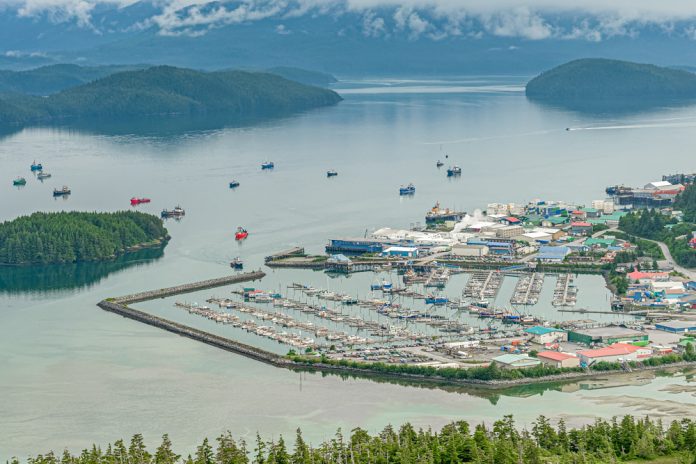Late season harvesters were still pulling in coho salmon in Prince William Sound in mid-September, with the preliminary Alaska Department of Fish and Game’s estimated harvest rising to 224,000 silvers, up from 199,000 a week ago.
The Copper River district has been the biggest contributor to the coho catch to date, with 132,462 fish caught in drift gillnets, followed by 33,607 fish brought in Eastern Prince William Sound purse seiners and 16,436 fish from Prince William Sound Southwestern purse seiners, according to ADF&G updates.
The average weight of Copper River cohos was 7.7 pounds, compared with 6.27 pounds in the Eastern PWS region and 6.9 pounds in PWS Southwest.
The overall commercial harvest in PWS through mid-September included more than 65 million pinks, 2.6 million chums, 1.3 million sockeyes, 224,000 cohos and 7,000 Chinooks, brought to processors in over 23,000 deliveries.
Copper River district drift gillnetters brought in more than 400,000 sockeyes, followed by Eschamy Main Bay drift and setnetters with 352,955 reds and Coghill drift gillnetters with 186,888 red salmon.
Coghill drift gillnetters also delivered 1.5 million chums, followed by more than 296,437 chums from Montague district purse seiners and 295,874 chums from PWS Southwestern purse seiners.
The largest harvest of pink salmon in PWS was 22,762,755 humpies from Eastern PWS purse seiners, followed by 12,441,780 pinks from Southwestern PWS purse seiners and 10,424,618 pinks from Northern PWS purse seiners.
Copper River drift gillnetters brought in the most Chinook salmon, a total of 6,956 fish, with Coghill drift gillnetters delivering 485 kings and Montague purse seiners delivering 382 fish.
The preliminary statewide catch has reached a estimated 219,275 salmon, including 151 million pinks, 54 million, sockeyes, 11.5 million, chums, 2.3 million cohos and 244,000 Chinooks.
Fisheries consultant Dan Lesh, who compiles the weekly in-season commercial salmon harvest updates for McKinley Research Group on behalf of the ALaska Seafood Marketing Institute, noted that while 2021 harvest numbers overall were large that low average fish sizes led to much less impressive harvests and revenues.
Year-to-date harvest numbers were up 20% compared to 2020 (2019 for pink salmon) and up 15% compared to pre-season forecasts. Forecasts have been exceeded for sockeye and pink salmon, but were not expected to be reached for keta, coho and king salmon, he said.
Although the summer keta harvest was generally poor, fall runs have been fairly strong, and this year counts among the three largest fall keta harvests in the last decade, he said. That late season windfall of fall runs did not include the Yukon River, where both commercial and subsistence harvesters were banned from fishing throughout the season because of weak runs.
In its latest update on the Yukon River fall fishery, issued on Monday, Sept. 20, ADF&G said that fall chum and coho salmon runs on the Yukon are the lowest on record.
The fall chum salmon run is approximately 102,000 fish, compared to a historical run size of 870,000 fish based on median timing, the announcement said. The coho salmon run is about 37,000 fish, compared to a historical run size of 240,000 fish. According to the fall chum salmon management plan the run size did not meet the threshold of 300,000 fish needed to allow subsistence, personal use or commercial fishing. The drainage wide escapement goal of 300,000-600,000 fall chum salmon, tributary escapement goals and Canadian treaty objectives are not expected to be achieved, the report said.















